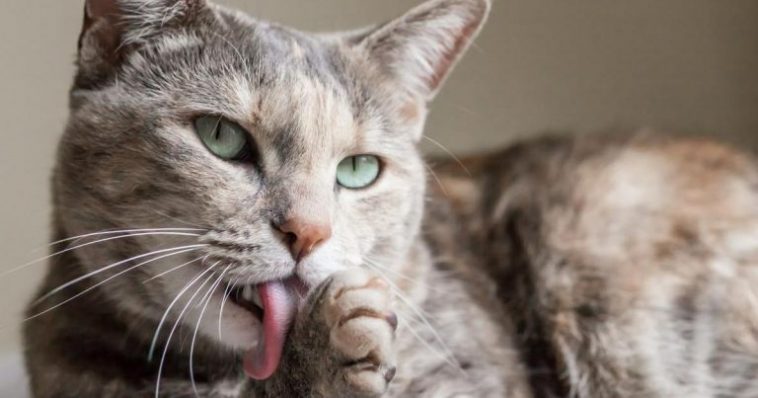How Do Hairballs Form?
Cats keep themselves clean by grooming – licking their hair coat with their tongue. A cat’s tongue has tiny hook-like, backward-slanted protrusions called papillae. These serve to catch dirt and loose dead hair.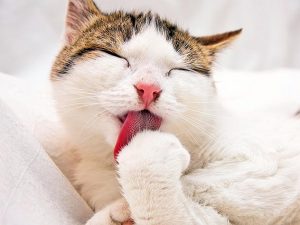
A cat’s barbed tongue catches loose hair that they inadvertently swallow and become a hairball.
Where Do Hairballs Go?
If the gastrointestinal tract (GIT) is working and moving normally these hairballs should travel down the GIT from the stomach to the intestines uneventfully. They should then be passed out of the body together with the fecal material. Occasionally, cats vomit hairballs from their stomach. While still in the stomach, hairballs are round clumps of hair. As the cat vomits, the hairball is propelled from the stomach back up into the esophagus where they assume the cylindrical shape of the esophageal tube which connects the throat to the stomach. As they are expelled through the mouth, the hairball comes out as a tube-shaped mass of hair that is wet and slimy from the digestive juices, mucus and saliva. They have the same color as the cat’s hair. They can measure from as small as one inch to as long as several inches.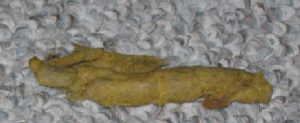
A hairball, when vomited, assume the cylindrical shape of the esophagus .
Your Cat Vomited a Hairball… Should you be Alarmed?
Cat parents are all too familiar with the hacking, coughing, gagging and retching sounds a cat makes when he is about to vomit a hairball. The hairball should soon appear following these sounds. If your cat frequently makes these sounds and does not expel any hairballs then there is reason to worry. The hairball may be stuck somewhere between the stomach and the mouth and may impede breathing. The esophagus is located adjacent to the windpipe and on occasion a hairball lodged in the esophagus may exert some pressure on the windpipe.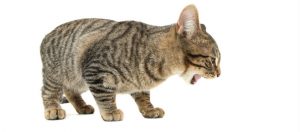
Hacking, gagging and retching precede the expulsion of a hairball.
How Can I Minimise Hairball Problems?
I must emphasise again that cats and hairballs always come together. So do not freak out if your cat vomited a hairball. Hairball formation is not totally preventable but you are able to minimise it. To be able to do this, it is best to bring your cat to the veterinarian for a check-up and let him/her diagnose properly so that they can treat it appropriately. They may have to take a blood sample to screen for systemic diseases. X-rays, ultrasound or endoscopic examination of the GIT may also be necessary especially if the cat is suffering from constipation. Examination of the skin should also be done to check for mites or fungal infections that may cause excessive shedding. Always consult with your veterinarian before using any product that claims to have hairball control properties. Do regular grooming by brushing or combing your cat. Long-haired cats require this daily and should be brought to a professional groomer at least twice a year. Short haired cats need brushing less frequently, two or three times a week would be sufficient. Regular grooming will remove loose hair making the amount of hair swallowed by the cat when it grooms itself be significantly less.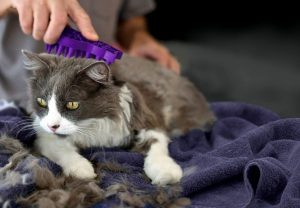
Regular brushing significantly reduces hairball formation.
Diets to Minimize Hairballs
On veterinarian’s advice, you may try using Special Diets or Hairball Formula food. This food includes supplements like omega 3 fatty acids to keep your cat’s hair and skin healthy and reduce the amount of shedding. Some products also have natural fibers added to help the GIT move normally and help hairballs pass through without incident. But remember that for some cats a sudden increase in dietary fiber may alter the normal GIT flora causing upset, affects motility and proper hairball expulsion. Feeding your cat a hypoallergenic cat food can also reduce the incidence of GIT inflammation and improve GIT motility, facilitating hairballs to pass through the bowels smoothly. Some vets determine that adding a small amount of pumpkin to a cat’s diet can do good for the GIT. Laxative hairball products and lubricants are available. They make the GIT move so that hairballs pass through more easily. A number of products include petroleum type lubricants that make some veterinarians and pet parents reluctant to use them. There are alternative lubricants you can discuss with your veterinarian. Be careful with using oil based products because they may interfere with the absorption of the fat soluble vitamins that may lead to other nutritional problems.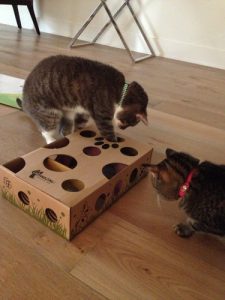
Providing toys reduces boredom and anxiety resulting to decrease in compulsive grooming.
Treatment for Hairballs
Treatment of primary or underlying problems is a must. If your cat vomited a hairball, you may have observed that your cat is grooming excessively, work with your veterinarian to find the reason/s why. It could be a skin problem; if so have the condition treated. If it is just out of boredom, provide kitty with sources of entertainment like puzzle toys. You may also take kitty out for regular walks or rides for new forms of physical and mental stimulation. This is provided that kitty is comfortable going outside and exploring and this activity will not stress her. Excessive grooming is also a form of compulsive behavior that is an outlet for anxiety. Observe the cat’s behavior and try to identify the stressors that are making kitty anxious and address them Maintain adequate hydration if your cat vomited a hairball. Water does not directly reduce hairball formation but adequate hydration will keep the GIT healthy making it function properly in moving hairball and fecal material along. Provide an accessible source of clean and fresh running water to encourage your cat to drink more.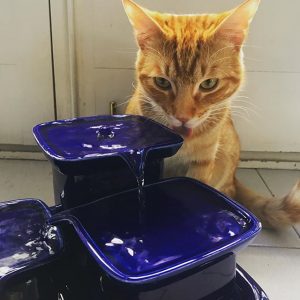
The Miaustore water fountain provides cats with fresh running water all day making them drink more for the maintenance of gastrointestinal tract health.

